Weighted vest benefits and other essential details
Author:
Reviewed by:
(Certified Nutritionist, S&C specialist, M.Sc.Eng. Biotechnology)
Unlock your full potential by engaging with our experts and community! Have questions about your fitness journey or looking for expert advice on weightlifting techniques? Don’t hesitate — leave a comment below and Ihor Shymechko will provide a personalized answer and insights to help you reach your goals.
Torokhtiy is reader-supported. Some links are affiliate links, and we may earn a commission at no extra cost to you. See our disclosure page for details.
Whether your goal is to develop strength, endurance, and cardio, a weighted vest is a great option to consider. In addition, a weighted vest is a low-impact exercise that increases fitness levels.
But most people still ask: Do weighted vests work? How do weighted vest work? What are weighted vest benefits? What are weighted vests good for? Is a weighted vest only suitable for professional athletes? The truth is that anyone can use and incorporate a weighted vest to increase the intensity of their workout sessions.
In this article, we will cover the benefits of a weighted vest, the drawbacks of a weighted vest, and the purpose of weighted vest. We’ll also cover exercises one can incorporate with a weighted vest and a few frequently asked questions.
The benefits of wearing a weighted vest include improved strength, cardiovascular health, enhanced bone health, endurance, speed, and fitness level.
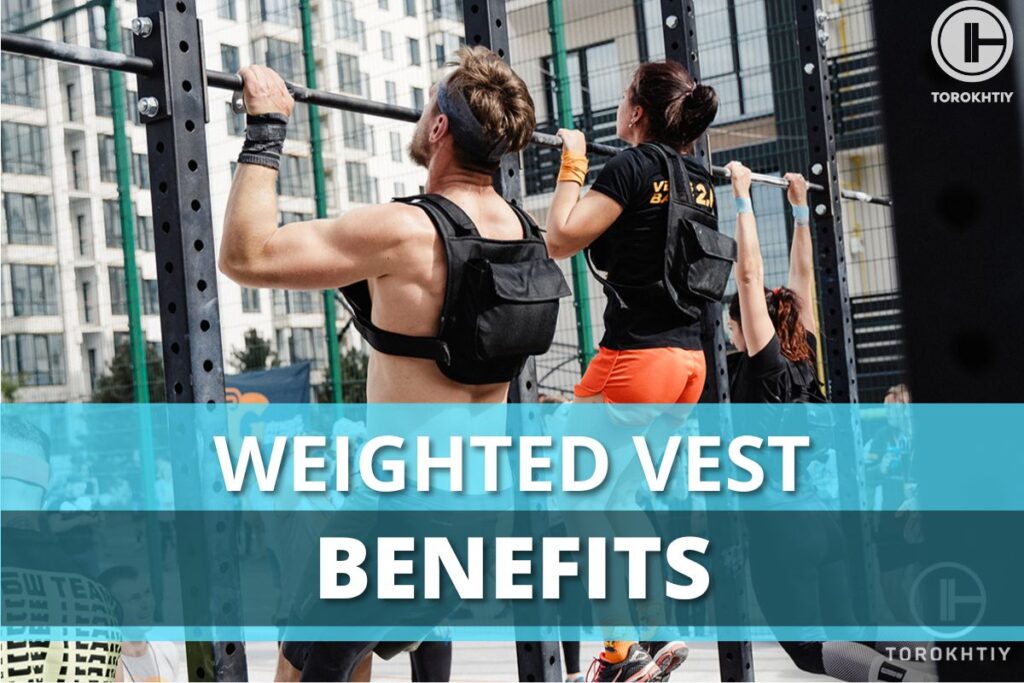
Benefits of Weighted Vests
Weighted vest workout benefits are numerous. They are:
✅ Improves Strength
Depending on the exercise you will perform, a weighted vest can improve strength. Adding more weight (in the form of a weighted vest) for example during your regular pull ups may exert force on your muscles to deplete the extra load. A consistent workout routine with a weighted vest will improve strength in the long run.
Several studies have shown that incorporating weighted vests with pushups improves overall strength. In addition, strength gain is observed in younger and older adults.
✅ Enhances Endurance
Wearing a weighted vest for endurance training will exert pressure on your muscles and force them to work harder to repel the load. In the process, your muscles will be trained to withhold external force. In the long run, your body will become accustomed to the heavy load, potentially enhancing endurance.
In addition, by training your body with extra load, you are improving the ability of your body to tolerate physical activity for an extended period.
A study shows that wearing a weighted vest improves agility-related performance in young men.
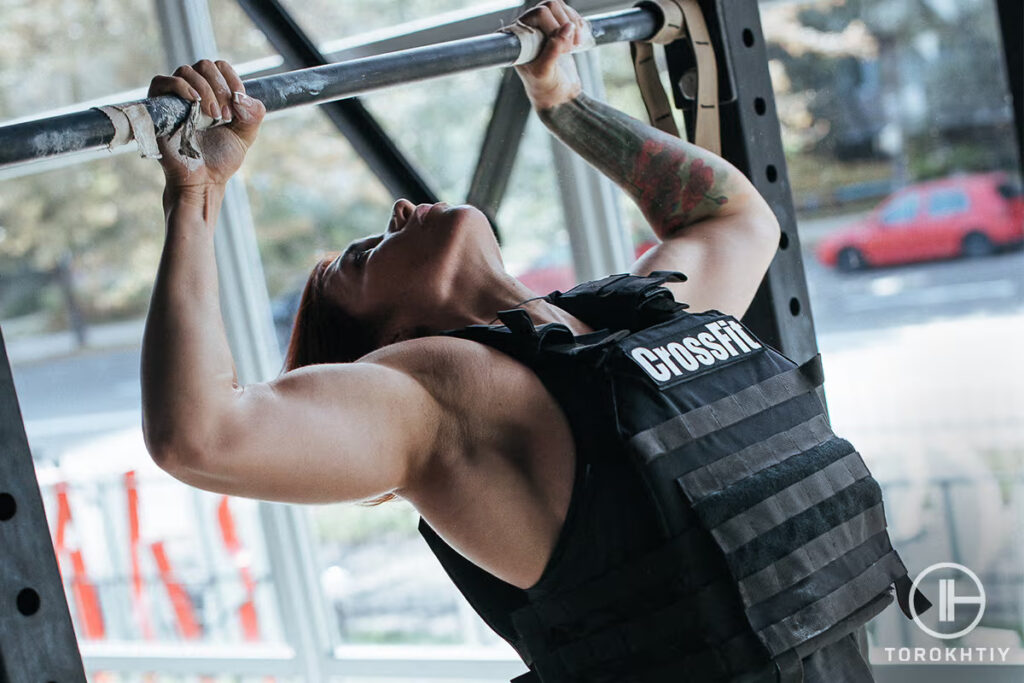
✅ Improves Overall Performance and Health
Using a weighted vest can add extra challenge to your workouts, whether you’re focusing on strength, endurance, metcons, or even just walking. It can also make your muscles work harder, which can help improve the flow of oxygen-rich blood in your body.
This added stress can make your heart and lungs work more, which has the possibility of improving your cardiovascular health. Keep in mind, though, that just because an exercise is harder doesn’t automatically mean it will improve your cardiovascular health. You need to do the right kind of exercises to really see benefits.
✅ Enhances Bone Health
Wearing a weighted vest puts an extra load on the body, supporting the stimulation of cells known as osteoblasts that produce healthy bone minerals.
In the long run, the strength and density of your bones increase to support the extra load.
Denser and stronger bones help reduce the risk of injuries after a fall and the chances of developing bone diseases.
A study shows that long-term bone density stability was observed in women wearing a weighted vest while performing a supervised exercise program.
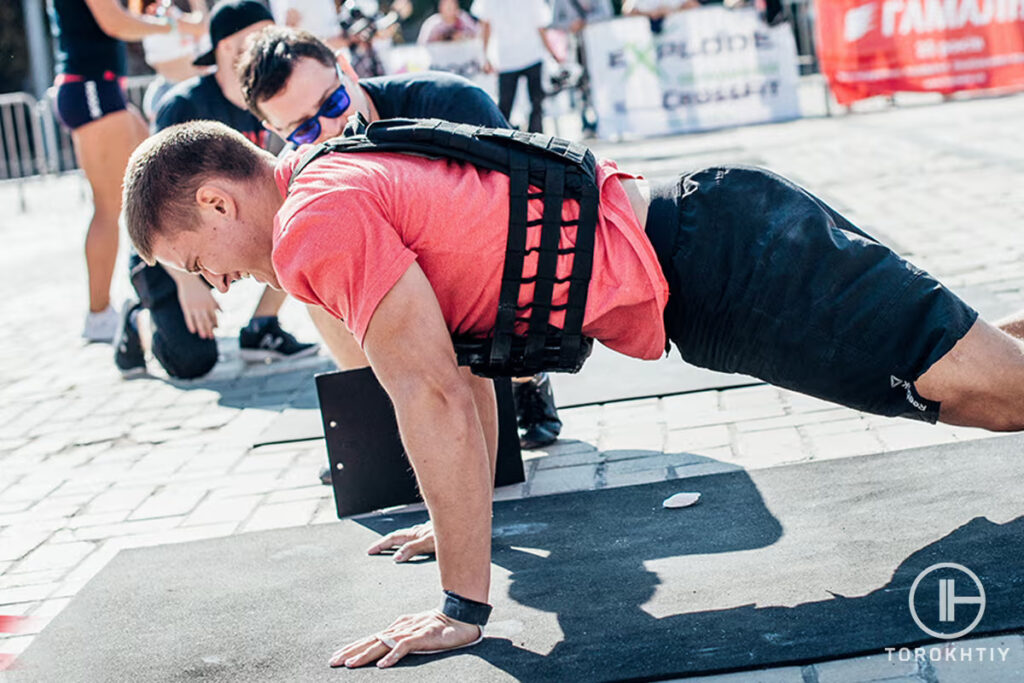
✅ Burns More Calories
When you’re working out with a weighted vest, you are forcing your muscles to work harder. Your muscles will require more energy than usual because of the added load.
This encourages your body to burn more calories.
A study shows that increased weight loading reduces body weight and body fat.
✅ Improves Balance
By adding a weighted vest to your workout routine, you’re helping your body improve its posture. During a workout with a weighted vest on your upper body, your muscles will be engaged and forced to maintain balance. When you lean in any direction wearing a weighted vest, your body will utilize its proprioceptors to counterbalance the additional weight.
Proprioceptors are sensory sensors that receive stimuli within the body concerning movement and position. They’re responsible for maintaining balance, preventing you from falling in one direction.
Wearing a weighted vest, in the long run, will improve the balance of your body.
A study suggests that working on a treadmill with a weighted vest improves balance.
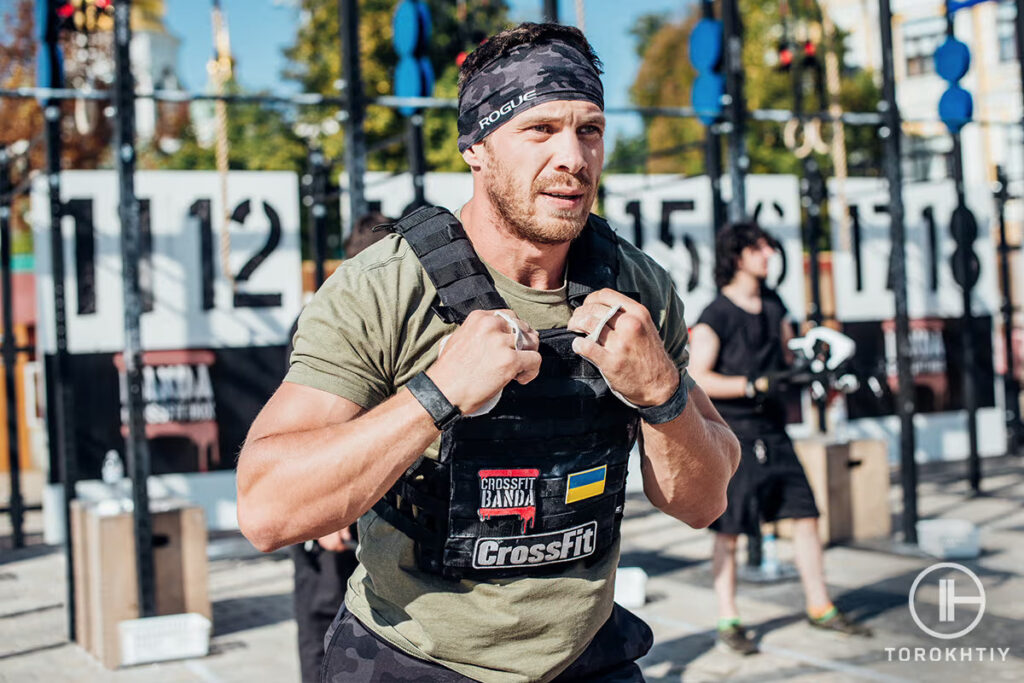
Drawbacks of Weighted Vests
Here are some disadvantages of weighted vests:
❌ Increased Risk of Injury
Using a weighted vest can increase the risk of injury. The additional load can put excess strain and stress on your joints, developing into injuries if care is not taken.
That’s why it’s advisable to use a weighted vest with the recommended amount of weight. Overtraining yourself with a weighted vest can also lead to injuries.

❌ Increased Sweating
Adding a weighted vest to your workout session can increase your sweat levels. With the added weight, your body will need to work harder to counterbalance the weight. This will lead to increased sweating. Many people find excess sweating uncomfortable.
That’s why it’s good to buy a weighted vest that can be easily washed to keep it smelling nice after workouts.
❌ Poor Posture
If your body gets accustomed to a weighted vest for an extended period, it may affect your body’s stability and center of gravity. In addition, choosing a weighted vest with more load than necessary can stress and strain your back. This will affect your posture.
That’s why it’s advisable to use a weighted vest responsibly, no matter your goal or how you plan on pushing yourself past your limit. In addition, ensure you choose one with the recommended load.
Purpose of Weighted Vest
Athletes (including climbers, bikers, hikers, runners, gymnasts, and swimmers), fitness enthusiasts, and older adults wishing to push through their limits, improve their performance, and target specific goals can utilize a weighted vest in their workout routine.
Here are some purposes for wearing a weighted vest:
1. Weight Loss
Many people wear weighted vests to achieve their weight loss goals. When a weighted vest is added to a workout regime, it propels the body to expend more energy than usual; this burns more calories and leads to weight loss.
Furthermore, wearing a weighted vest may increase your muscle mass. The more muscle mass you build, the more calories will be burned by your body.
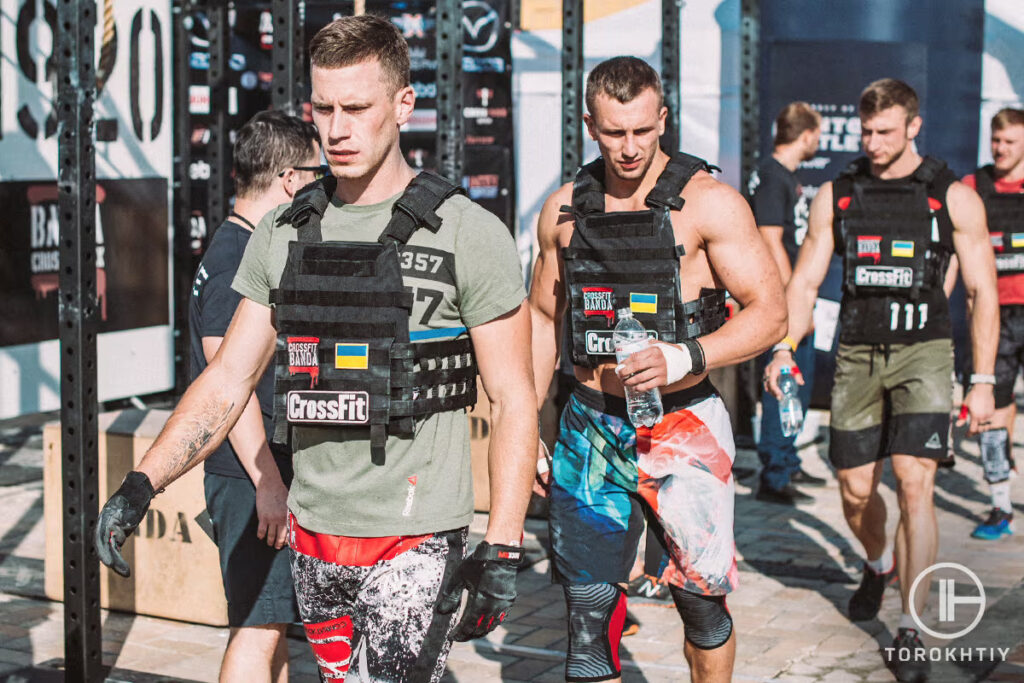
2. Building Muscles
Do weighted vests build muscle? Incorporating a weighted vest with a workout builds muscles that resist the extra load.
This depends on the type of workout. For instance, running long distances with a weighted vest is not effective way to build up your leg muscles. Doing pushups with a weighted vest may build your chest and arms muscles. Performing pull-ups with a weighted vest will develop your back and arm muscles.
3. Building Stamina
A consistent workout with a weighted vest builds up stamina. By supporting your body with more weight in the form of weighted vests, you’re training your muscles to adapt to the added weight. With a subsequent weighted vest workout routine, your muscles will get accustomed to the extra weight. And when you take off your weighted vest, you will discover that you are lasting longer in your regular workouts (however it’s a more complicated topic depending on the sport you’re training).
In the long run, this translates to more stamina or endurance. In addition, the more your muscles get accustomed to the added weight, the more your endurance level will increase.
4. Increase Intensity
Adding a weighted vest to your workout helps increase the intensity of your workout.
For instance, if your preferred workout is push ups, you may discover that you don’t feel the strain or stress on any muscles or even the effect on some days. Putting on a weighted vest will help rekindle the intensity of the workout and enable you to feel the full effect.
In addition, training with a weighted vest can help produce results in a shorter time than you would normally get for an extended period because of the added intensity.
5. Improve Athletic Performance
Many athletes, such as boxers, gymnasts, and runners, do training with weighted vest to improve their performance.
The high intensity that a weighted vest provides helps build several muscles, such as the legs and upper body. Without weighted vests, athletes may experience increased strength, stamina, and speed, thus improving their performance.
A study shows that training with a weighted vest improves the speed of runners.
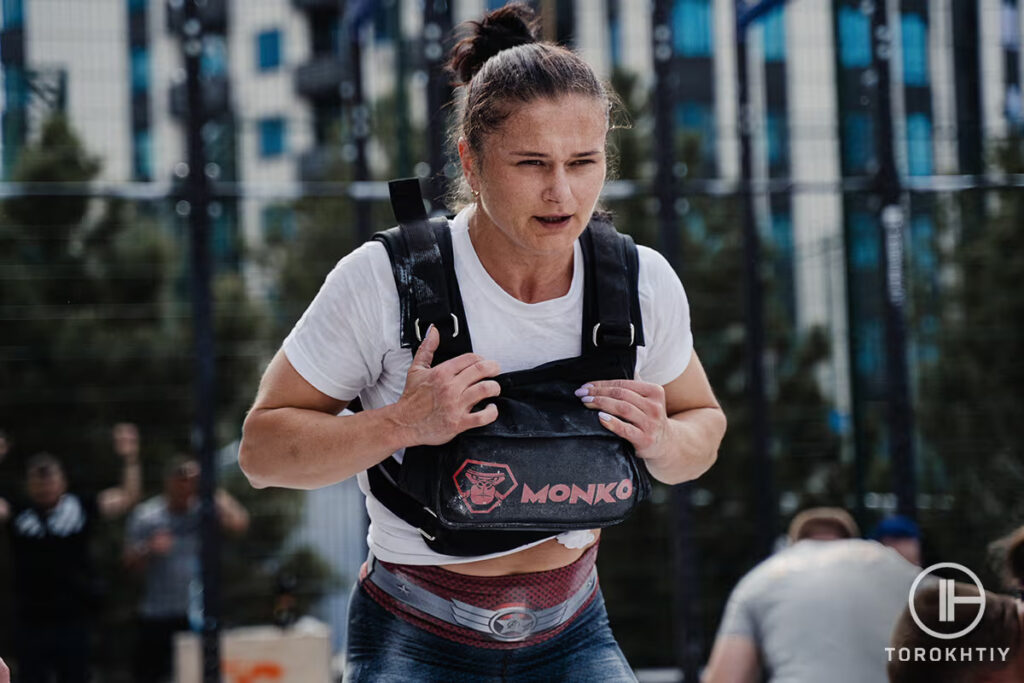
Common Weighted Vest Exercises
Here are some weighted vest exercises:
1. Pull-Ups or Chin-Ups
Adding a weighted vest to your pull-ups workout builds up several muscles, such as the biceps, back, and forearms.
2. Push-Ups or Planks
Wearing a weighted vest during push-ups or planks will strengthen your chest and core muscles.
3. Lunges
Adding a weighted vest to your lunges will improve your balance and the stability of your legs. Also, by forcing you to work harder, it strengthens your legs.
4. Squats
Wearing a weighted vest for squats will add resistance to your leg muscles, including the quads, hamstrings, and glutes.
5. Walking or Running
Wearing a weighted vest while running or walking may improve your strength, stamina, and speed.
6. Lateral Jumps
Adding a weighted vest will intensify your lateral jumps and improve your balance and coordination.
Some Weighted Vest Exercise Tips
Here are some tips to consider when exercising with a weighted vest:
1. Consider Your Comfort
Before choosing any weighted vest exercise, it’s essential to consider your comfort. You should wear a close-fitted weighted vest that prevents bounce, allows your arms to swing freely, and gives you enough mobility to breathe, and does not irritate your skin.
2. Adjust the Load Based on the Exercise
If you wear an adjustable weighted vest, you can add or remove load to reflect your exercise.
3. Start Small
If you’re just starting to use a weighted vest, start with a lower weight, and you can increase it over time to avoid injuries or fatigue.

4. Choose Exercises That Work Against the Weight of the Weighted Vest
To get the best benefits, choose an exercise that works against the weight of the weighted vest when moving your body.
For example, running with a weighted vest will provide more benefits than riding a stationary bike with it. This is because running with a weighted vest allows you to work against the weight of a weighted vest while moving your body. When riding a stationary bike, you’re only adding extra load to your joints, and your movement is restricted.
In addition, you’ll get the best resistance from workouts such as pull-ups or squats compared to seated exercises such as lat pull-downs or leg presses.
5. Consider Your Fitness Level When Determining How Frequently You Should Use a Weighted Vest
It’s advisable to consider your fitness history before deciding how frequently you use weighted vests.
If you’re starting, you can use it one to two times weekly to give your body time to adapt to the added weight.
You can use it 2 to 3 times weekly if you’re already in the game.
Condor Sentry Plate Carrier
- Color: Black, Tan, Olive, Multicam Black
- Width: 32’’-54’’ waist size
- Height: 9.25’’
- Material: Reinforced Polyester
- Closure Type: Adjustable shoulder straps + side buckles
- Available weights: 5.75 and 8.75 pounds
- Plate pockets: Medium and Large ESAPI plates up to 10.25″ x 13.25″
- Extra features: an emergency drag handle
Condor Sentry Plate Carrier is the weighted vest we recommend. This minimal-bulk and high-performance tactical vest has full adjustability that comfortably fits anyone.
It’s a great choice for those looking to intensity and reap the best benefits from their workout programs.
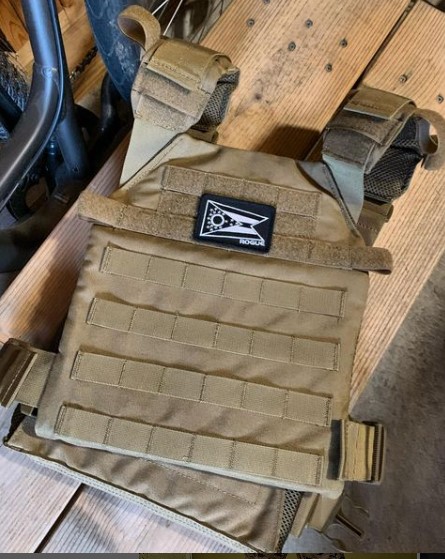
This weighted vest comes in different colors such as tan, black, and olive drab. This durable and lightweight vast has unique features such as a padded mesh interior lining for ideal breathability, heavy-duty webbing for modular attachments, quick-adjust cinches, release buckles, and adjustable shoulder straps.
Positives:
Could be better:
FAQ
How Long Should You Wear a Weighted Vest?
It will depend on the exercise that you’re doing. You can wear it only during exercise, during exercise and rest time or you can grab it and use it for your cardio/endurance work. Be sure that you start easy and gradually increase time/load to avoid overload and injuries.
Does Weighted Vest Help Lose Belly Fat?
Exercises such as walking and running with a weighted vest can help you lose overall body fat, including belly fat, only when you’re combining them with conscious nutrition that result in calorie deficit. You need to burn more calories than you’re consuming. Then you will lose fat.
Do Weighted Vests Help Build Muscle?
A weighted vest helps build several muscles, such as the chest, back, forearm, legs, core, etc. This depends on the kind of workout you’re doing with a weighted vest and how you do it.
Conclusion
A weighted vest offers several benefits, such as burning calories, improving strength, endurance, cardiovascular health, and balance. However, it has drawbacks, such as the increased risk of injuries, poor posture, and increased sweating.
Several people wear weighted vests for different purposes, such as losing weight, building stamina and muscles, increasing the intensity of workouts, and improving athletic performance.
Some common weighted vest exercises include pull-ups, push-ups, squats, walking or running, etc. We provided some tips to keep in mind when adding a weighted vest to your workouts. The weighted vest we recommend is the Condor Sentry Plate Carrier.
Did you learn something new? Have you added a weighted vest to your workouts before? How was the experience? Did you experience any challenges? What’s your favorite workout? What’s your favorite workout time? We’ll expect your opinion in the comments.
Also read:
- Best Weight Vest Workouts
- Weighted Vest for Running
- Weighted Vest Guide
- Benefits of Weighted Vest for Walking
References:
- Comparison of Kinematics and Muscle Activation between Push-up and Bench Press // NCBI: https://www.ncbi.nlm.nih.gov/pmc/articles/PMC6728153/
- Effect of Weighted Vest Suit Worn During Daily Activities // NCBI: https://pubmed.ncbi.nlm.nih.gov/22266642/
- Acute and Longitudinal Effects of Weighted Vest Training on Sprint // NCBI: https://pubmed.ncbi.nlm.nih.gov/31070108/
- Long-Term Exercise Using Weighted Vests // NCBI: https://pubmed.ncbi.nlm.nih.gov/10995045/
- Increased Weight Loading Reduces Body Weight and Body Fat in Obese Subjects // NCBI: https://pubmed.ncbi.nlm.nih.gov/32510046/
- Effects of Short-Term Aerobic Exercise With and Without External Loading // NCBI: https://pubmed.ncbi.nlm.nih.gov/22441962/
- The Weighted Vest // Health&Fitness Journal: https://journals.lww.com/acsm-healthfitness/fulltext/2020/03000/shareable_resource__the_weighted_vest__an.3.aspx
- Acute Effects of Different Loading Conditions Using Weighted Vest // ResearchGate: https://www.researchgate.net/publication/273613248
- Photos by Torokhtiy Media Team.
Why Trust Us?
With over 20 years in Olympic weightlifting, strength training, nutrition coaching, and general fitness our team does its best to provide the audience with ultimate support and meet the needs and requirements of advanced athletes and professional lifters, as well as people who strive to open new opportunities and develop their physical capabilities with us.
By trusting the recommendations of our certified experts in coaching, nutrition, and sports training programming, as well as scientific consultants, and physiotherapists, we provide you with thorough, well-considered, and scientifically proven content. All the information given in the articles concerning workout programming, separate exercises, and athletic performance, in general, is based on verified data.
The product testing process is described in more detail here.
Author: Ihor Shymechko
Pro Olympic Weightlifter, Coach
Best Results: Snatch – 208 kg,
C&J – 240 kg
Ihor has been a professional weightlifter since 1996, boasting over two decades of competition experience. His notable achievements include clinching the European Championship in 2009 and securing a silver medal in the 105kg division at the Senior World Championships in 2011. Ihor represented his country in the 2008, 2012, and 2016 Summer Olympics. After retiring from competitive weightlifting, he transitioned to coaching, leveraging his vast experience to guide athletes who now compete on both national and international stages.
Reviewed by: Jacek Szymanowski
Certified Nutritionist,
M.Sc.Eng. Biotechnology
Performance architect,
Strength and Conditioning Specialist
With over 30 years of fighting experience, specialization in nutrition coaching for athletes, and expertise in metabolic health and dietary strategies, Jacek offers a comprehensive approach to optimizing your performance and well-being. Backed by a Master of Science degree in Biotechnology, Jacek remains at the forefront of scientific advancements, ensuring that his coaching is always evidence-based and up-to-date.




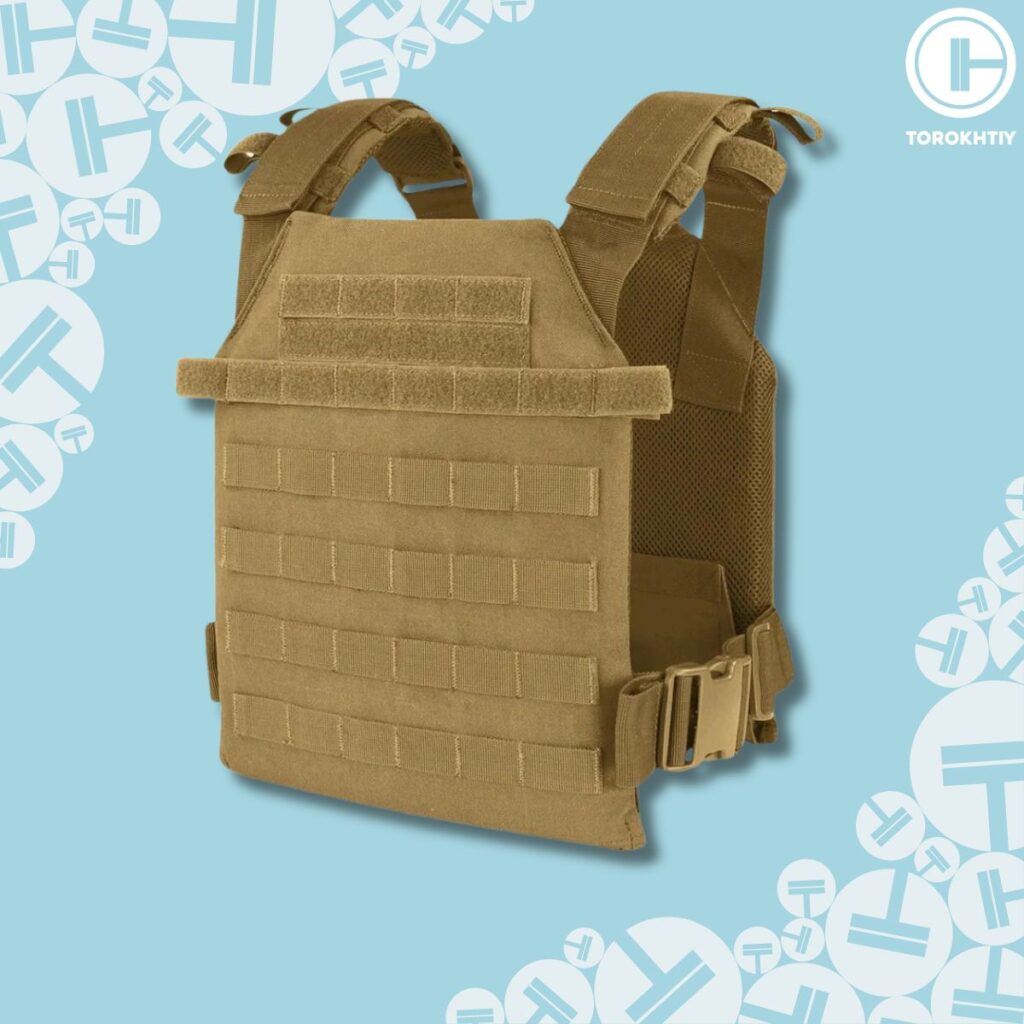
Still have questions after reading our article? Unlock your full potential by engaging with our experts and community! Don’t hesitate — leave a comment below and Ihor Shymechko will provide a personalized answer and insights to help you reach your goals.